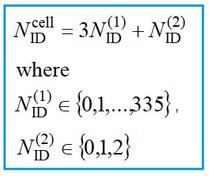5G NR NAS and App Layer Failures: Root Causes and Solutions
Advertisement
Here are some common 5G NR test cases focusing on the NAS and application layers, along with their potential failure points, root causes, and suggested solutions.
Failure Case #1: NAS Signaling Connection Failure
Root Causes: Several factors can lead to NAS signaling connection failures:
- Authentication problems.
- Poor radio conditions affecting signal quality.
- Incorrect Tracking Area Update (TAU) procedures.
- Software bugs within the NAS layer itself.
Solutions/Rectifications: To address these issues, consider the following:
- Authentication: Make sure your authentication and key management are implemented correctly and functioning as intended. Double-check your credentials and security configurations.
- TAU Optimization: Fine-tune your Tracking Area Update (TAU) parameters to ensure efficient mobility management. Pay close attention to how you’re handling user movement between different tracking areas.
- Reduce Signaling Load: Excessive signaling can overwhelm the core network. Implement strategies to reduce signaling overhead and prevent connection drops.
Failure Case #2: PDU Session Establishment Failure
Root Causes: When a PDU session fails to establish, it could be due to:
- Invalid or incorrect PDU session parameters.
- Missing capabilities, either on the User Equipment (UE) or the network side.
- Improper handling of the Access Point Name (APN) configuration.
Solutions/Rectifications: Here’s what you can do to fix PDU session establishment failures:
- Parameter Verification: Carefully verify that all PDU session parameters and the APN configuration are correct and compatible.
- Error Handling: Implement robust error handling within the core network to gracefully manage failures during session establishment. This includes providing informative error messages for troubleshooting.
- Optimize Core Network Procedures: The core network needs to be able to handle a high volume of session requests. Optimize core network procedures to improve session establishment success rates.
Failure Case #3: Mobility Management Failure (Handover, Cell Reselection)
Root Causes: Problems with mobility management, such as handovers or cell reselections, can be caused by:
- Incorrect or poorly configured handover parameters.
- Slow response times in the Xn or NG interfaces.
- Signaling failures occurring between different gNBs (gNodeBs).
Solutions/Rectifications: To improve mobility management and reduce failures:
- Optimize Handover Algorithms: Optimize handover algorithms and parameters to efficiently handle User Equipments (UEs) that are moving quickly. Consider factors like signal strength, latency, and network load.
- Robust Signaling: Ensure robust and reliable signaling between gNBs to support seamless handovers. This involves verifying the integrity and performance of the Xn interface.
- Extensive Testing: Thoroughly test a wide range of mobility scenarios to identify and resolve potential failure points. This includes testing different speeds, environments, and network conditions.
Advertisement
 RF
RF

